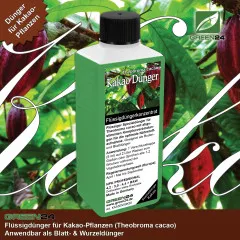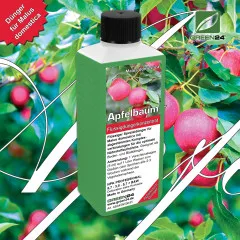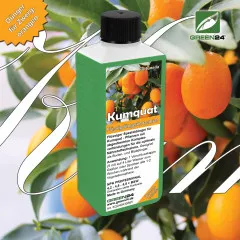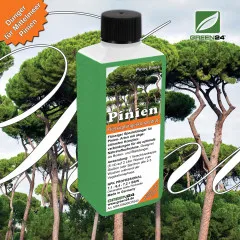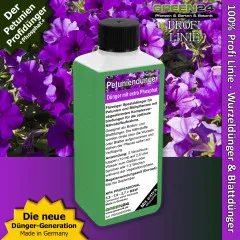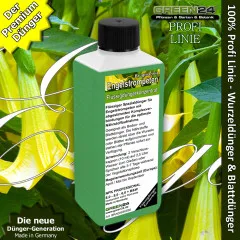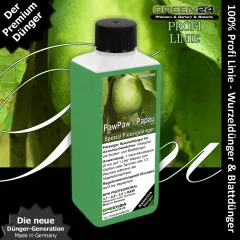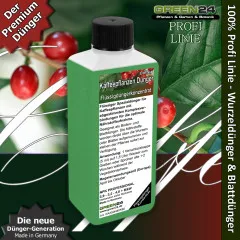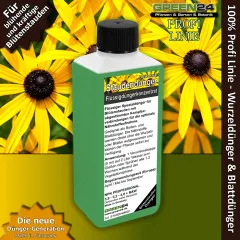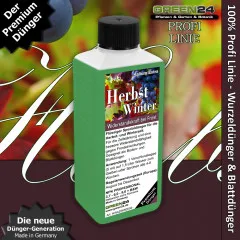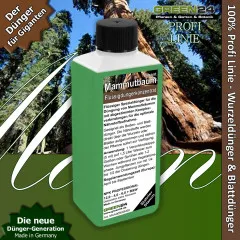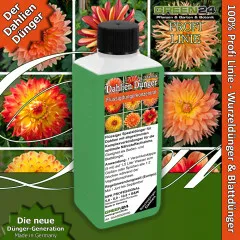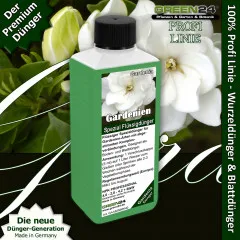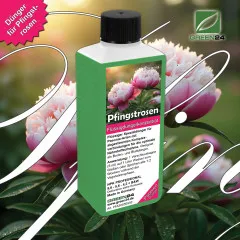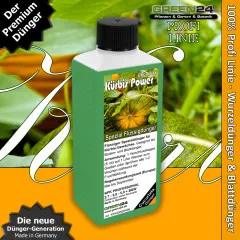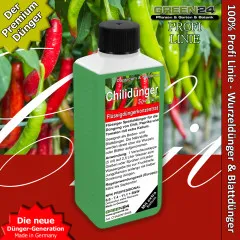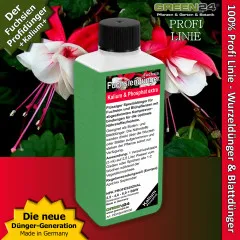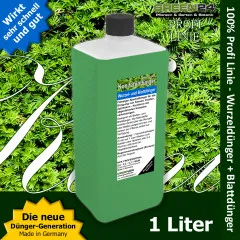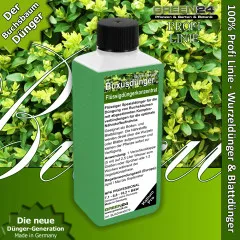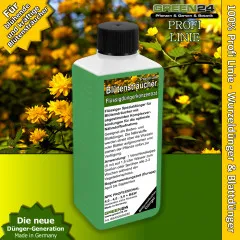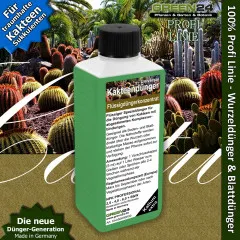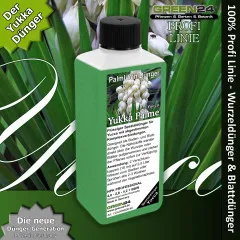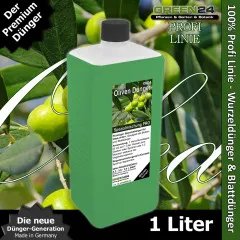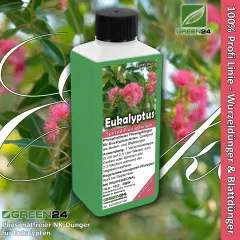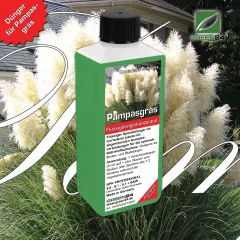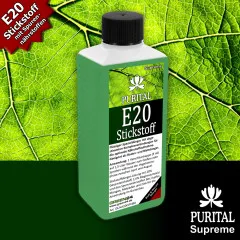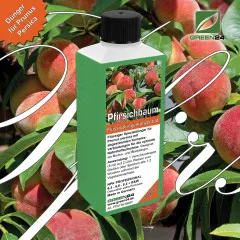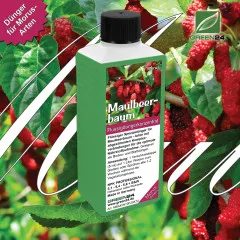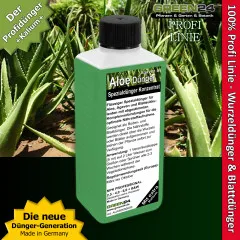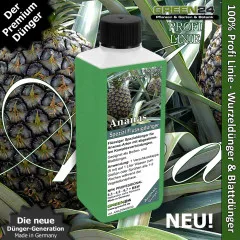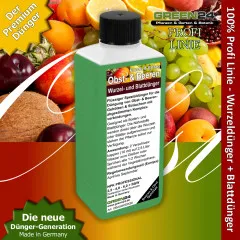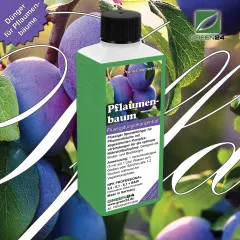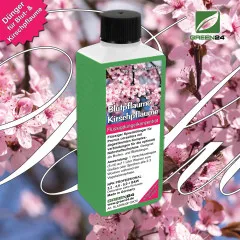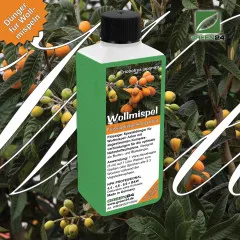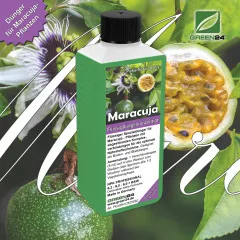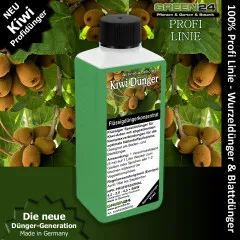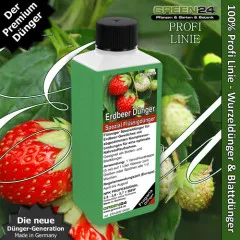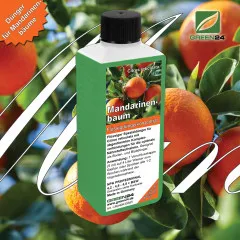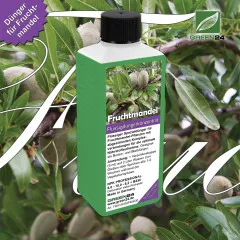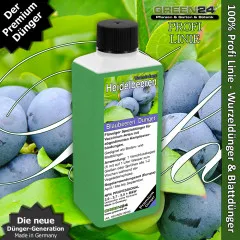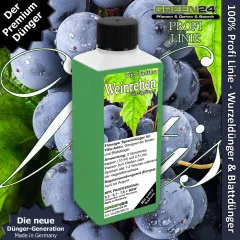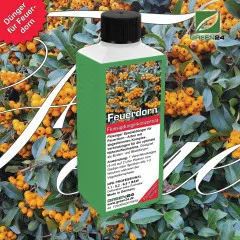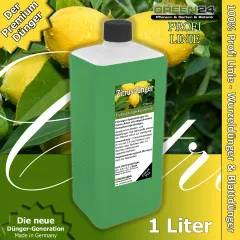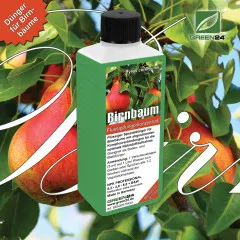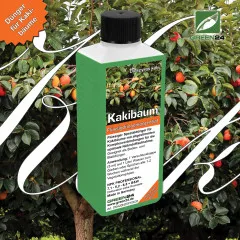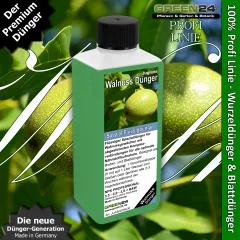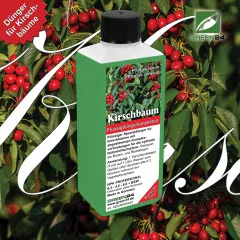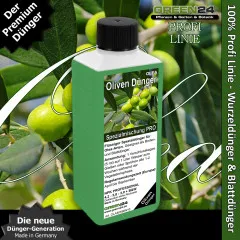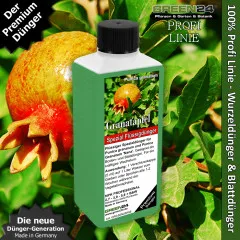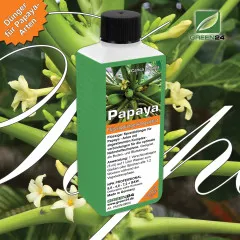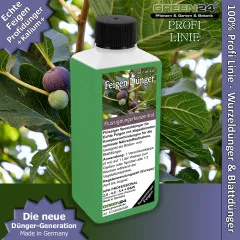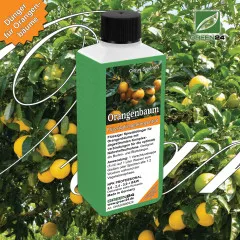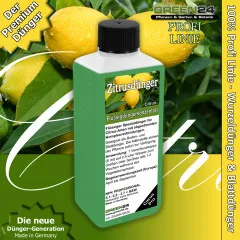Settings
Shipping country
Languages
Often ordered together
More from: Fruit & Berry
Products description
Mediterranean Dreams: GREEN24 Specialized Fertilizer for Citrus Plants
Citrus trees embody Mediterranean lifestyle and bring sunshine, fragrance, and flavor to every terrace. With their fragrant white flowers, glossy evergreen leaves, and juicy fruits, they transform any outdoor space into a small paradise. As demanding container plants, they require specially tailored nutrient supply to unleash their full potential. Our Citrus Specialized Fertilizer is precisely tailored to these special needs and prevents the dreaded chlorosis.
Plant Profile: Citrus Plants (Citrus spp.)
- Family: Rutaceae (Rue family)
- Genus: Citrus (Citrus plants)
- Origin: Southeast Asia, now cultivated worldwide in warm climates
- Description: Evergreen trees and shrubs with fragrant flowers and edible fruits
- Special Feature: Simultaneously flowers, unripe and ripe fruits on the same tree
- Important Species:
- Citrus limon - Lemon (classic yellow, sour)
- Citrus sinensis - Orange (sweet, juicy)
- Citrus reticulata - Mandarin (small, sweet, easy to peel)
- Citrus aurantiifolia - Lime (green, very sour)
- Citrus paradisi - Grapefruit (large, bitter-sweet)
- Citrus japonica - Kumquat (edible peel)
- Citrus × microcarpa - Calamondin (ornamental citrus)
- Citrus aurantium - Bitter orange (Seville orange)
- Popular Varieties:
- Meyer Lemon - Sweeter than regular lemons
- Bergamot - For Earl Grey tea
- Yuzu - Japanese citrus fruit
- Limequat - Cross between lime and kumquat
- Tangelo - Mandarin-grapefruit hybrid
- Buddha's Hand - Finger-shaped citrus fruit
- Growth form: Tree or shrub, 2-8m height (smaller in containers)
- Leaves: Evergreen, leathery, glossy, aromatic
- Flowers: White, strongly fragrant, usually 5-petaled
- Fruits: Berries with oil-rich peel and juicy pulp
- Uses: Fresh consumption, juice, marmalade, cosmetics, aromatherapy
The Science of Citrus Nutrition
The Mediterranean Formula for Healthy Citrus Trees
Citrus plants have special nutrient requirements as evergreen container plants and are particularly susceptible to iron deficiency:
- Nitrogen (N) for Lush Growth: Essential for formation of new shoots and characteristic rich green foliage. Nitrogen promotes protein synthesis and chlorophyll formation.
- Phosphorus (P) for Flowers and Fruits: Central for fragrant flower splendor and development of juicy fruits. Phosphorus supports energy and flower metabolism.
- Potassium (K) for Fruit Quality: Important for sugar transport, peel firmness, and aroma development. Potassium regulates osmosis and strengthens cell walls.
- Iron (Fe) Against Chlorosis: Absolutely critical for citrus plants! Iron deficiency leads to yellow leaves with green veins (chlorosis). Chelated iron remains available even with hard water.
- Magnesium (Mg) for Chlorophyll: Central atom of chlorophyll, essential for photosynthesis and rich green leaves.
- Trace Element Complex: Manganese for enzyme activity, zinc for growth hormones, boron for flower quality, molybdenum for nitrogen utilization.
- Complex Compounds: Chelated nutrients prevent precipitation with hard irrigation water and keep trace elements plant-available.
Application: Mediterranean Care for Your Citrus Trees
Root Feeding (Main Method)
- Dosage by Plant Size:
- Small citrus trees (up to 1m): 5ml concentrate per 2L water
- Medium citrus trees (1-2m): 7-8ml concentrate per 2.5L water
- Large citrus trees (over 2m): 10ml concentrate per 3L water
- Young plants: 3ml concentrate per 1.5L water
- Frequency by Season:
- Growth phase (March-May): Every 7-14 days
- Bloom & fruit set (April-July): Weekly
- Fruit ripening (July-October): Every 2 weeks
- Winter rest (November-February): Every 4-6 weeks or pause
- Application: Water substrate well before fertilizing, then distribute fertilizer solution evenly
- Special note: Increase frequency at first signs of chlorosis
Foliar Spraying (Anti-Chlorosis Boost)
The glossy, leathery citrus leaves are excellent for spray feeding and enable rapid nutrient uptake in case of deficiency symptoms.
- Dosage: 3-4ml per 1 liter of water
- Application: Spray leaves from both sides, especially at first signs of chlorosis
- Frequency: Every 2-3 weeks in addition to root feeding
- Optimal times: Early morning hours or late evening hours
- Tip: Use lime-free water (rainwater) for optimal uptake
Care Guide for Citrus Plants
Location and Climate
- Light: Full sun, at least 6-8 hours daily
- Temperature: 18-28°C optimal, overwinter frost-free
- Humidity: 50-60%, spray regularly
- Substrate: Well-draining, slightly acidic, pH 6.0-6.5
- Water: Regular, but no waterlogging
Overwintering
- Temperature: 5-15°C, bright and frost-free
- Location: Conservatory, greenhouse, or bright basement
- Watering: Reduced, keep substrate only slightly moist
- Fertilizing: Greatly reduce or stop completely
Special Features of Citrus Plants and Their Uses
Mediterranean Container Culture
- Terrace Decoration: Elegant container plants for Mediterranean atmosphere
- Fragrance Garden: Flowers emit intense, sweet fragrance
- Year-round Beauty: Evergreen leaves and often simultaneous flowers and fruits
- Mobile Gardens: Flexibly placeable, can be brought indoors in winter
Culinary Uses
- Fresh Consumption: Vitamin-rich fruits directly from the tree
- Juice and Smoothies: Freshly pressed juices
- Marmalades: Homemade preserves
- Aromatherapy: Essential oils from peels
- Tea and Spices: Leaves and peels as flavorings
Collector Culture
- Variety Diversity: Hundreds of different Citrus varieties
- Exotic Rarities: Rare species like Buddha's Hand or Yuzu
- Crosses: Interesting hybrids and new breeds
- Historic Varieties: Old, traditional cultivars
Health Benefits
- Vitamin C: Strengthens the immune system
- Antioxidants: Protection against free radicals
- Essential Oils: Relaxation and aromatherapy
- Fiber: Promotes digestion
Problem Solving Through Targeted Nutrient Supply
Common Problems and Solutions
- Yellow leaves (Chlorosis): Iron deficiency → Foliar spray with chelated iron, use lime-free water
- Leaf drop: Location change or water shortage → Stabilize location, water evenly
- Weak flowering: Phosphorus deficiency or too little light → Phosphorus-emphasized fertilizing, choose brighter location
- Small fruits: Potassium deficiency or water stress → Potassium-emphasized fertilizer, water regularly
- Brown leaf tips: Over-fertilization or hard water → Reduce dosage, use rainwater
- Pests: Dry air → Increase humidity, spray regularly
Effects of Optimal Fertilizing
- Leaves: Become rich green, glossy and chlorosis-free
- Flowers: Intense fragrance, abundant flower formation
- Fruits: Juicy, aromatic, with firm peel
- Growth: Strong, healthy shoots
- Resistance: Better resistance to stress and pests
- Overwintering: More stable plants for winter rest
Mediterranean Garden Culture
Design Ideas
- Terrace Ensemble: Various citrus species in uniform containers
- Fragrance Garden: Combination with lavender, rosemary, and oleander
- Conservatory: Year-round culture in heated rooms
- Balcony Oasis: Space-saving culture on small areas
Seasonal Care
- Spring: Repotting, pruning, start fertilizing
- Summer: Intensive care, fertilize and water regularly
- Autumn: Harvest, prepare for overwintering
- Winter: Rest period, reduced care
Mandatory Application Instructions
- Mandatory observance of information sheet 130405! This can be found at URL https://www.green24.de/NPK.pdf
- Always observe the label!
- Do not apply undiluted.
- Shake well before use.
- Only apply during the growing season.
Safety Instructions
- Avoid contact with eyes, skin, and clothing.
- Do not inhale spray or spray mist.
- Keep away from food and beverages.
- Wash face and hands thoroughly after use.
- Official advisory recommendations take precedence.
- Fertilizers may leave stains on surfaces that may not be removable.
Storage
- Store dry, dark at +8°C to +40°C.
- Keep out of reach of children and animals.
- Fertilizer must not be introduced into water bodies or reach wastewater.
- With proper storage, stable for several years without quality loss.
- Use diluted fertilizer promptly.
File
Leaflet 130504 for general application of liquid fertilizers (concentrates)307.09 KB
Customer reviews3
Average rating: 5
Based on 3 Customer reviews
Evaluation:| Author: Zeebo| Date: 12/10/2016
Lemon tree has grown very well this summer using this product
Evaluation:| Author: A Customer| Date: 23/03/2016
MY LEMON TREE SEEMS TO BE THRIVING - HENCE I AM HAPPY WITH THIS PRODUCT
Evaluation:| Author: Khourshed M.| Date: 06/06/2015
wow this thing works i got 4 lemon trees 3 in a pot and 1 in a soil all looked dull with yellow leaves
i put this product on my plants before a two week trip came back and the magic works
I tried different citrus fertilizers and non of them did what this feed did
it is German product , it is expensive buy hey it works
Highly recommended 10/10
i put this product on my plants before a two week trip came back and the magic works
I tried different citrus fertilizers and non of them did what this feed did
it is German product , it is expensive buy hey it works
Highly recommended 10/10
Fragen & Antworten
Last viewed:
Back to top

